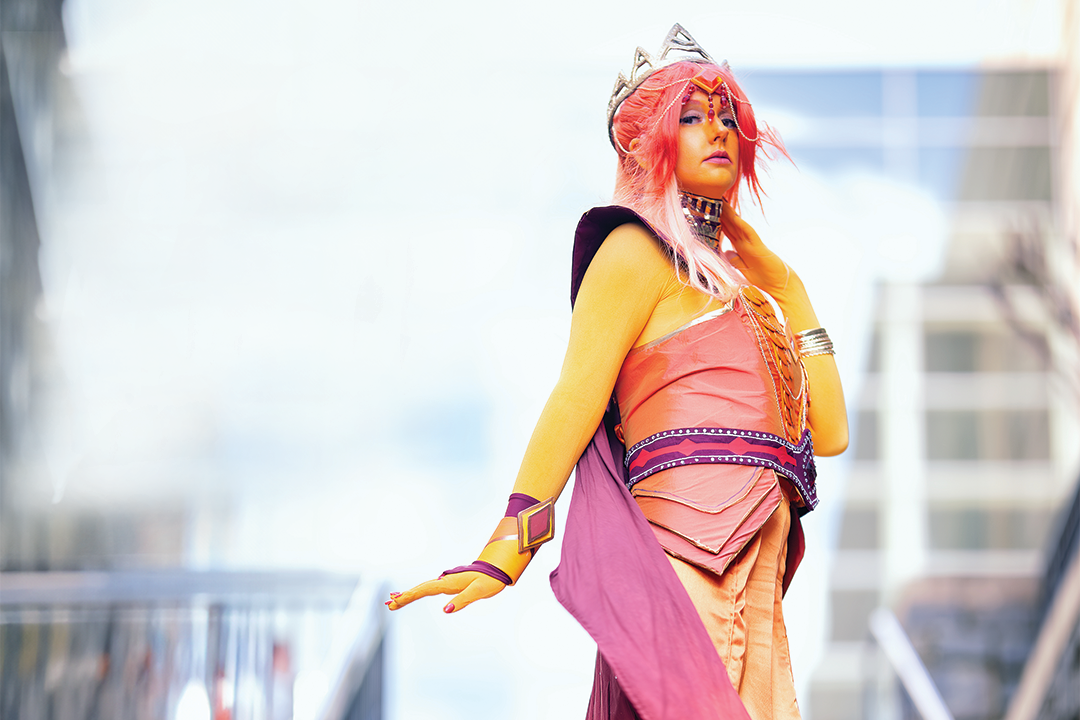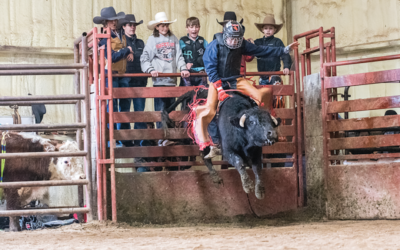It feels funny for her to admit this now, with her basement office devoted to a wardrobe of characters from video games and anime, but there was a time when America Zamora resisted the call of cosplay.
Zamora isn’t afraid to be a nerd. Her bedroom in her Evans home has enough Pokémon stuffed toys and anime souvenirs to stock a gift shop in Japan, which she’s traveled to several times. But when she was in high school, in the mid-2000s, if you cosplayed, “you were one of the biggest nerds ever,” she says. She wanted to, but she just didn’t have the guts to stand out. The one time she tried acting in high school, she had a panic attack.
Finally, when a friend invited her to Fan Expo Denver in 2021, close to Halloween, her favorite holiday, she answered cosplay’s siren call with relish. She worked on a costume for hours every day over the course of a month and went as a female version of the demon form Mammon, which either needs no explanation or one that’s too long.
Later, in Nashville, she went as Astarion Ancunín from the video game, “Baldur’s Gate 3,” and people treated her like Taylor Swift, following her around and raving about the details in her outfit and her fantastic hair, a wig that took her 48 hours to perfect.
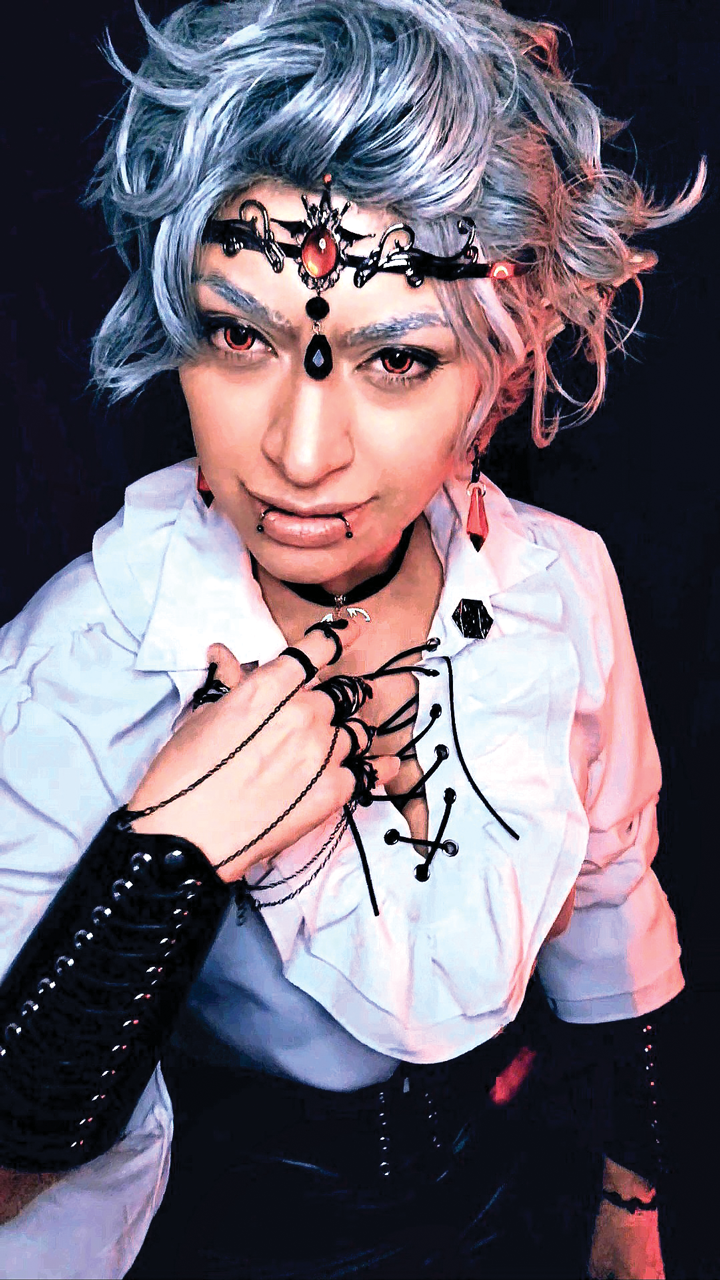
America Zamora as Astarion from “Baldur’s Gate 3.
Zamora, now 33, began a TikTok page featuring all of her characters, and she has plans this year to go to conferences all over the world with them. She has contact lenses for each character and notes on how to do their makeup, and she even has perfume so she can smell like them, based on what they say in the shows and games.
“I’m just really good at figuring things out,” she says, though she still isn’t great at sewing. “I want every detail to be correct.”
Cosplay followed the same character arc, if you will, as Zamora, as it grew from a niche hobby to a dominating force at comic cons and many other events that cater to nerd culture. Now it’s so prevalent that many high school students display their memberships proudly. People also dress up to go to movies: Last year’s biggest moneymaker, “Barbie,” was as pink as a Mary Kay Cadillac.
Catering to cosplayers
Nick Armstrong started the Fort Collins Comic Con in 2015 and hoped 100 people would show up. More than 1,500 people came, which not only covered his costs but allowed him to donate $15,000 to the Poudre River Public Library District. More than 3,000 people showed up in 2016, and it’s attracted that many ever since, raising thousands of dollars for local causes every year. More than 50 percent of participants show up in costume, Armstrong says.
“It proved there were geeks in this community that need it to exist,” he says. “Cosplay has always been the heart and soul of what we do.”
This year’s convention takes place from Aug. 16-18 at the Fort Collins Senior Center, and cosplay will be a big part of it. The event will have a catwalk where people can show off their costumes and, if they want, get feedback. There may even be a costume contest.
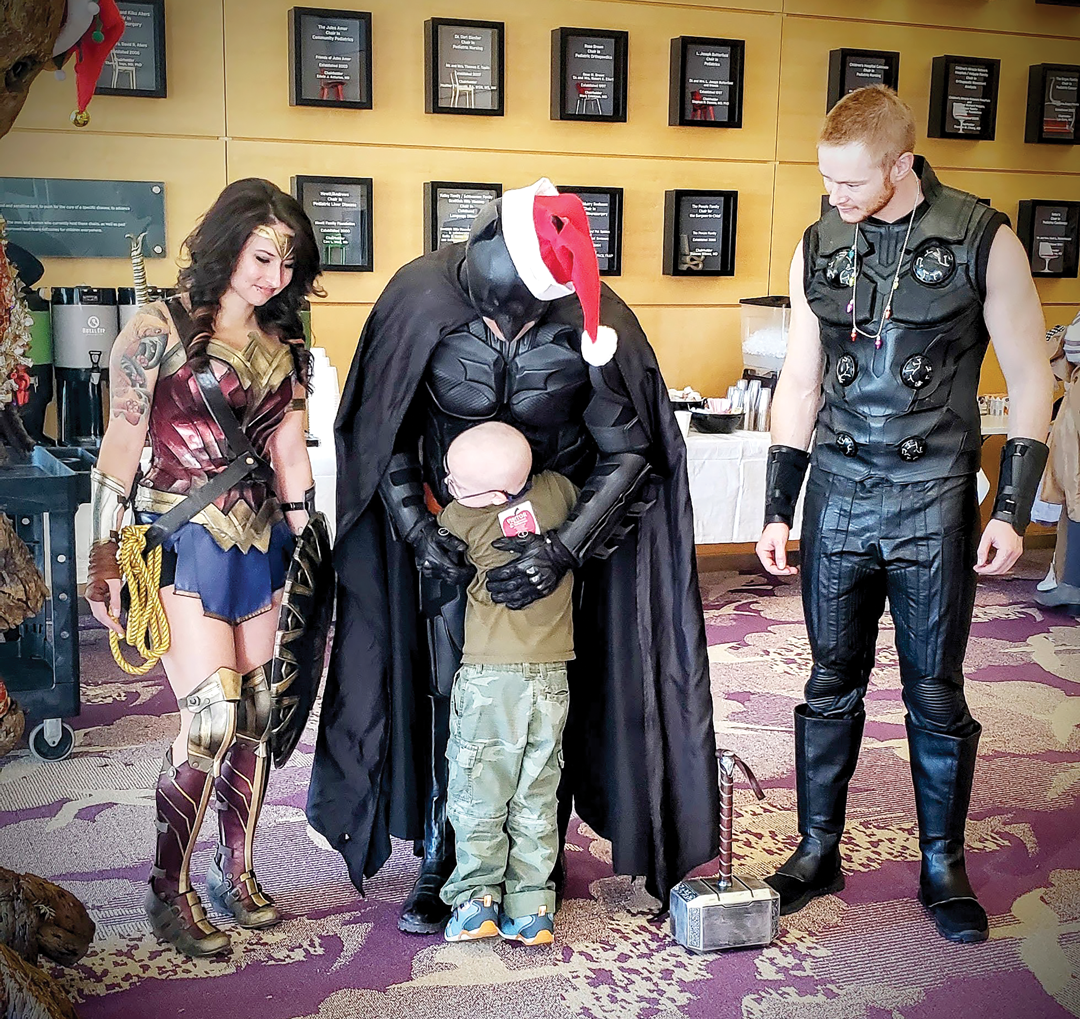
Krysta Parr as Wonder Woman, Casey Barrett as Hospital Batman and Kirk Brackmann as Thor.
Armstrong now has two people who oversee cosplay content. One of them is Nova Sparks (they/them), 30, who lives in Fort Collins. This is their stage name, and they prefer to go by it because they work in education and don’t like those two worlds intertwining—although they don’t mind when a student recognizes them at a convention and says so, quietly, the next day at school.
Sparks began cosplaying back in 2014, when they were in college and dressed as Poison Ivy, a Batman villain, for the fundraising event Relay for Life. Now they focus on anime and movie characters, such as Kate Bishop (AKA Marvel’s young Hawkeye) and a character from “Sailor Moon.” They also love Harley Quinn for her chaotic energy.
“I take my favorite characters and try to embody them,” Sparks says, “and use them as confidence boosters.”
As with many hobbies filled with passionate people, gatekeeping and judging is an unfortunate part of cosplay, Sparks says, although they discourage it when they can.
“If you’re showing up in costume and you want to play a character, you’re a cosplayer, even if you go to Spirit Halloween and just buy a costume,” Sparks says.
Armstrong feels the same way and admits, with a laugh, that his costumes are off the shelf, including a Star Trek costume and his favorite, a Jurassic Park ranger trying to find a loose dinosaur, which he likes because a couple hours later, he shows up in an inflatable T. rex costume. Still, he understands the passion that some people have for the art form.
“Cosplayers are often overlooked in fashion,” he says. “But it really is art.”
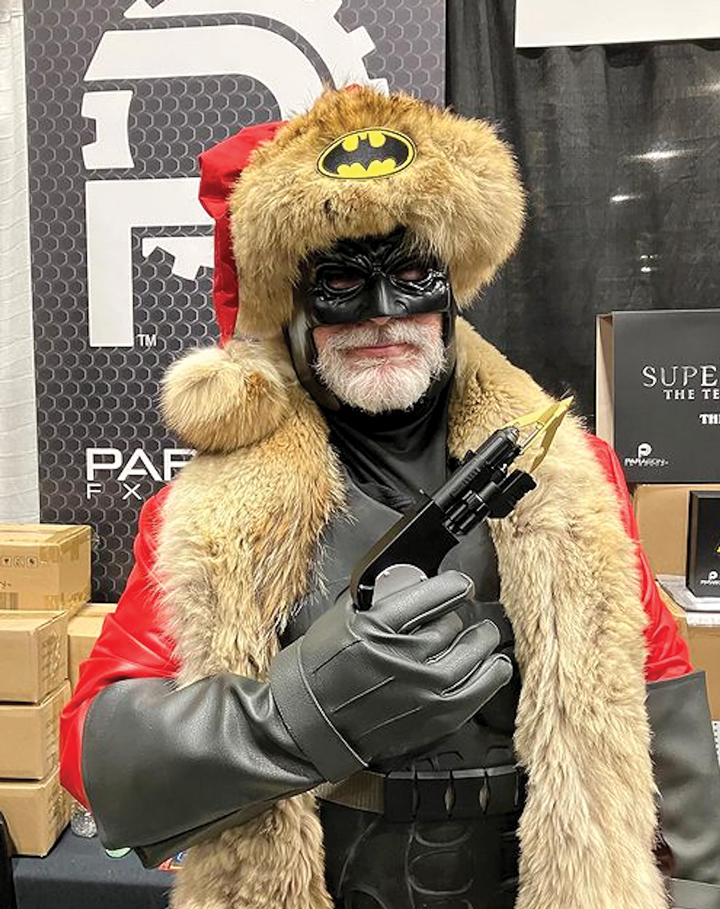
Thomas Endres as Santa Batman
“My Costume, Myself”
When Thomas Endres went to comic cons with his oldest daughter, what he saw was more than just devoted fans dressed up as their favorite characters. He saw a culture.
Studying pop culture is what he does, as a professor of communication studies in the College of Humanities and Social Sciences at the University of Northern Colorado. He’s seen similar communities among bikers, heavily tattooed people and even Elvis impersonators.
“The costumes were a way for them to express their own story, whether their race or ability or disability,” Endres says. “The costumes do more to reveal than conceal.”
Endres wrote a book on cosplay, called “My Costume, Myself: Celebrating Stories of Cosplay and Beyond,” which features interviews with cosplayers and explores their motivations. He’s willing to consider that some do it just for fun, but most cosplayers, he says, have a message in what they wear.
Some wheelchair users, for instance, like to dress up as Professor X, the brilliant leader of the X-Men, probably because it’s a way to embrace their disability and show that characters can be amazing despite their paralysis, Endres says. Others in a wheelchair like to dress up as, say, Captain America, as a way of showing that they aren’t limited in what they can do.
Cosplay also allows people to learn about themselves in a safe space, Endre says. In his book, he talks about a guy who dressed up as Eleven from “Stranger Things.” The costume helped him grow into someone who now identifies as nonbinary.
“At some level,” Endres says, “you’re taking what’s inside and putting it out there.”
Endres does cosplay—“when in Rome,” he says—and his favorite character is Santa Batman. His wife, Maki Notohara Endres, once dressed up as Michelle Yeoh’s character, Evelyn Wang, from the Oscar-winning movie, “Everything Everywhere All at Once.” People loved her costume, though she says half-jokingly, “I was just being Asian.”
His wife’s comment brings up a point that Endres likes to emphasize: Anything goes in cosplay, as long as they can answer the question, “Is it appropriate or appropriation?”
For example, Endres believes it’s fine for a Black person to dress up as Spiderman, but many believe a white person shouldn’t dress up as Black Panther.
“It’s a hard question to answer,” he says, “but not really if you think about it.”
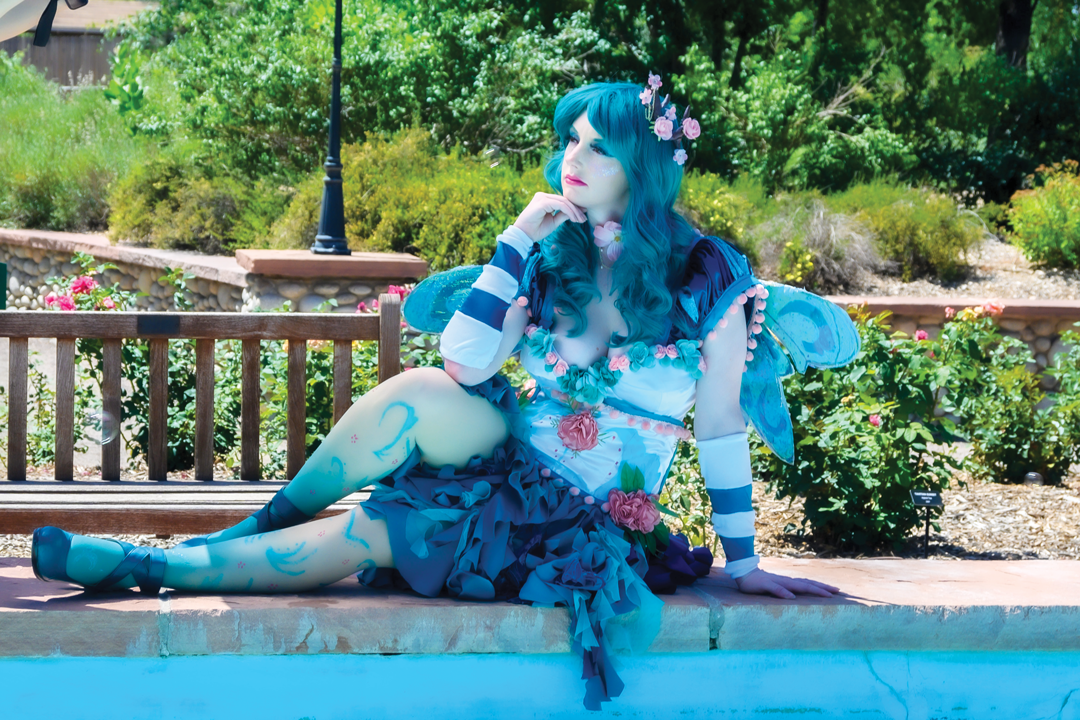
Nova Sparks as Sailor Neptune from “Sailor Moon,” fairy design by NoFlutter. Photo by Yuki Cat Captures.
Uplifting others
Casey Barrett’s cosplay origin story began with another Children’s Hospital Colorado visit for his daughter, Olivia. The visits were all too common, and yet this time seemed like it’d be easy because they thought she just had the flu. When doctors said it was more than that, Barrett’s autistic son, Jordan, had a meltdown.
It was going to be another hard day, in other words, until a cosplayer dressed as Captain Jack Sparrow walked through the door.
“It changed his whole day,” Barrett, 41, says of Jordan. “It was amazing to see how one small act like that can make you forget why you are there. It stuck with me.”
Barrett needed that small break more than most. His daughter, now 12, has the neurodegenerative disorder pontocerebellar hypoplasia and functions at the level of an infant. So, way back then, in 2016, he developed an alter ego, Hospital Batman, and for nearly a decade he’s spent countless hours at the hospital brightening the days of little patients and giving parents like himself a brief respite.
He also makes several appearances a year in Northern Colorado despite living in Westminster. He recently appeared at the Fort Collins Museum of Discovery for a day honoring those with autism, including Colorado State University professor Temple Grandin.
Barrett is one of many cosplayers who like to spread joy at hospitals, churches and events such as special needs proms. Those cosplayers are fans, too—many of them go to conventions—but the focus is on community service. Others who do similar visits include Star Wars groups, with perhaps the most famous being the 501st Legion (there’s a “Mountain Garrison” group that represents Wyoming and Colorado). One of the more well-known local groups is the High Plains Ghostbusters, with members in Windsor and Greeley who like to create “positive psychokinetic energy.”
Barrett visits the hospital by himself or as the unofficial leader of a group he calls the “Super Mega Awesome People.” He’s self-conscious about that name—he thinks it sounds arrogant—but it stuck after a successful hospital visit. Members of 3C CausePlay, another community-focused troupe from Denver, are also part of the group. Jordan, now 18, sometimes acts as Robin to Barrett’s Batman, although now he prefers to dress as a character from the video game, “Kingdom Hearts.”
One of Barrett’s favorite characters in the group is a Groot, from “Guardians of the Galaxy,” who can “grow” a flower out of his hand and offer it to a usually delighted child.
“Their faces light up,” Barrett says. “The interactions are just wonderful. Everything is negative in their world, and for a moment, they’ve forgotten why they are there. They’re just lost in imagination and fantasy and wonder.”


